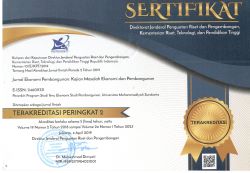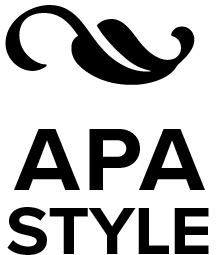Indonesian Economic Structure: An Analysis of Temporal Leontief Inverse
Firmansyah Firmansyah(1*), Shanty Oktavilia(2)(1) Diponegoro University
(2) Universitas Negeri Semarang
(*) Corresponding Author
Abstract
This study aims to analyze the Indonesia economic structure with employing the temporal Leontief inverse which was developed by Sonis and Hewings (1998) on 1975-2005 Indonesia’s input-output tables. In the first stage, this study investigates how the manufacturing industries in driving the Indonesian economy during structural changes. In the second stage, this study examines the structural changes of the manufacturing industries, which can explain the trends in individual industry balance in the context of the economic system. Based on the analysis, this study can trace how each year’s change contributes to the total impact in gross output change.
Keywords
Full Text:
PDFReferences
Badan Pusat Statistik. 2005. Statistik 60 tahun Indonesia merdeka, Jakarta: Badan Pusat Statistik.
Badan Pusat Statistik. Various years. Indonesian input-output table, Jakarta: Badan Pusat Statistik.
Chenery, H.B. and T. Watanabe. 1958. International comparisons of the structure of production, Econometrica 26:487-521, Quoted in Okuyama, Y., M. Sonis and G.J.D.
Hewings, (2006). Defourny, J., and E. Thorbecke. 1984. Structural path analysis and multiplier decomposition within a social accounting matrix framework”, Economic Journal 94: 111136.
Guo, D., G.J.D. Hewings, and M. Sonis. 2005. Integrating decomposition approaches for the analysis of temporal changes in economic structure: an application to Chicago’s economy from 1980 to 2000”, Economic Systems Research 17, No. 3 (September): 297–315.
Hayashi, M. 2004. Structural changes in Indonesian industry and trade: an input-output analysis. The developing economies, XLIII-1: 39–71 [www document] http:
//www.ide.go.jp/English/Publish/Periodi-cals/De/pdf/05_01_03.pdf, accessed 3 August 2011, 10.30
West Indonesian time.
Jacob, J. 2005. Late industrialization and structural change: Indonesia, 1975–2000, Oxford Development Studies 33, No. 3&4 (September–December): 297-315
Leontief, W. 1970. The dynamic inverse, in A. P. Carter and A. Brody eds, Contributions to input-output analysis, Amsterdam, Netherlands: North-Holland publishing; 17-46. Quoted in Okuyama, Y., M. Sonis and G.J.D. Hewings (2006)
Miernyk, W.H., K.L. Shellhammer, R.L. Coccari, W.H. Wineman, C.J. Gallagher, and D.M. Brown. 1970. Simulating economic development, Lexington, MA: Lexington Books. Quoted in Okuyama, Y., M. Sonis and G.J.D.
Hewings, (2006) Okuyama, Y., M. Sonis and G.J.D. Hewings. 2006. Typology of structural change in a regional economy: a temporal inverse analysis, Economic Systems Research 18, No. 2 (June): 133–153.
Pyatt, G. and J.I. Round. 1979. Accounting and fixed price multipliers in a Social Accounting matrix framework, Economic Journal 89: 850-73, Quoted in Okuyama, Yasuhide, M. Sonis and G.J.D. Hewings (2006).
Sonis, M., and G.J.D. Hewings. 1998. Temporal Leontief inverse. Macroeconomic Dynamics, 2, 1998:89-l14. [www document] http: //journals.cambridge.org.dbgw.lis.curtin.edu.au/, accessed 30
July 2011, 13.00 west Indonesian time
Tiebout, C.M. 1969. An empirical regional input-output projection model: the State of Washington, 1980, Review of Economics and Statistics, 51, 334-340. Quoted in Okuyama, Y., M. Sonis and G.J.D. Hewings (2006)
Tambunan, T. 2006. Long term trends in the industrial and economic growth in Indonesia, working paper series No.11 Center for industry and SME studies (September), [www document] http://www.fe.trisakti.ac.id/pusatstudi_industri/,accessed
Article Metrics
Abstract view(s): 1085 time(s)PDF: 578 time(s)
Refbacks
- There are currently no refbacks.















